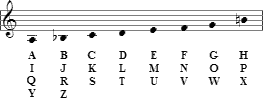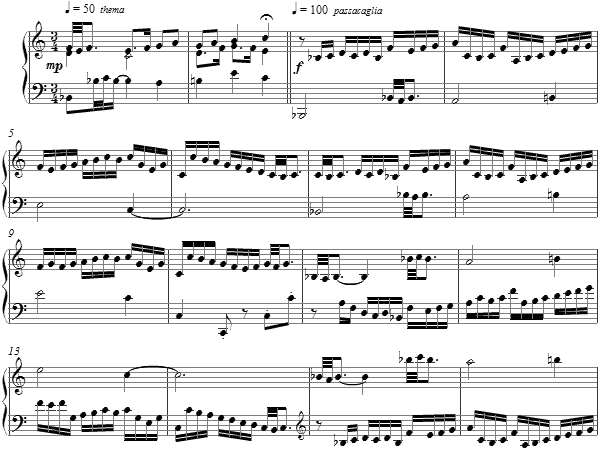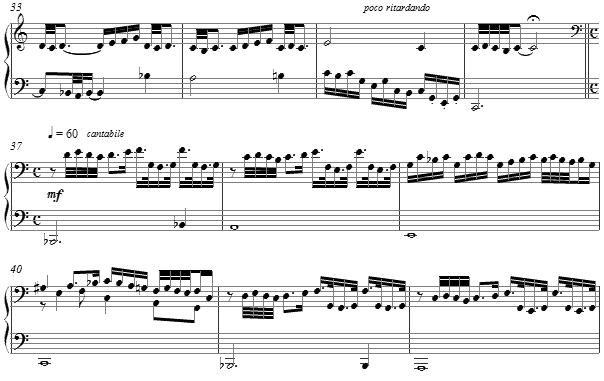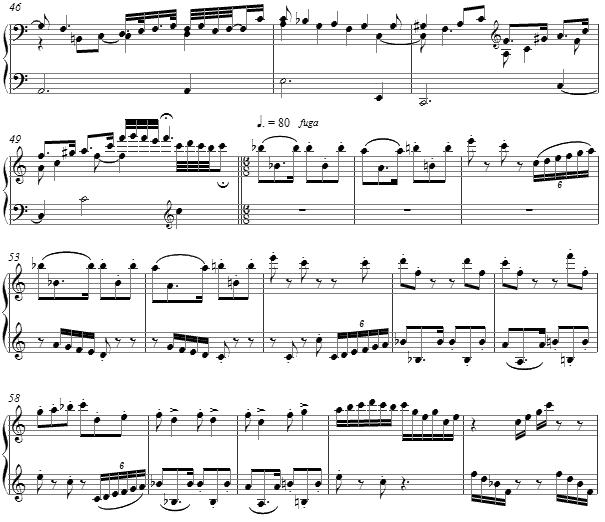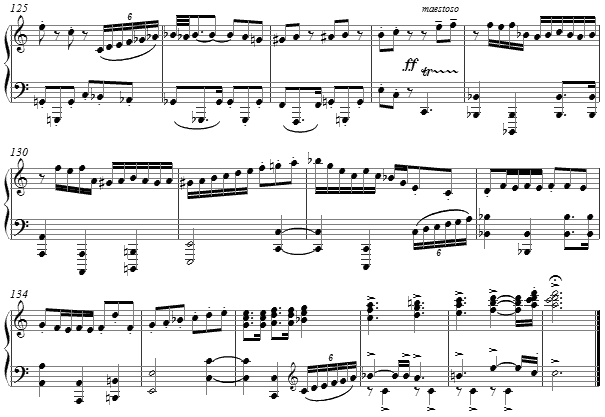Music and Texts of GARY BACHLUND
Vocal Music | Piano | Organ | Chamber Music | Orchestral | Articles and Commentary | Poems and Stories | Miscellany | FAQs
Passacaglia, Cantabile and Fugue on "Brahms" - (2009)
for piano
for Susanne Paasch
My friend and colleague, Susanne, sent me a ticket for a concert performance of Johannes Brahms' Requiem, paired with a new work by Carsten Borkowski based on a cipher of the name Brahms. That cipher based on German with the inclusion of a Greek letter is B-Re-A-H-Σ-Es (the German B as B-flat, Re as D natural, the German system's H as B-flat, the Sigma as a sideways "M" interpreted as E natural, and the German Es as E flat). Borkowski's notes state that "Brahms gave us a gift via his name." In fact, many different ciphers can be created, and interpreted as tonal rows in a serial method or simply as a cantus firmus in more traditional methods. The programs notes which Susanne sent along in the post amused me, for I have occasionally used my own cipher, simpler than the above and based in part on a historical lineage with Maurice Duruflés extension of the original note name cipher as found in some of his organ works. My cipher which I used in my suite, The Jerusalem Windows for organ, and other works is as follows:
For this, the name Brahms is interpreted by this cipher as B flat, a second B flat, A, B natural, E and C. That becomes, with small ornamentation, the bass line of a thema, and then theme of the passacaglia in triple meter.
The passacaglia as with the theme itself, cadences on C with a ritardando. Thereafter an ornamental cantabile in duple meter follows.
Again comes a cadence on C. Thereafter the fugue takes up the theme in a 6/8 meter, jaunty and enthusiastic, extending the repetitions of the theme's notes to create this subject.
The fugue subject appears in a variety of tonal domains, with interludes for variety, and the final statement of the theme is the subject elongated over a quote from the opening counterpoint of the passacaglia. The final cadence implies the normal harmonic resolution of a theme which moves from B flat to C to F, unstated previously, but with the final note of the theme as the bottom note of this inverted major seven chord.
[ 5 pages, circa 4' 25"]
The entire work is here,
, an MP3 file [ 4.2 MB, 4' 25" ]
The score is available as a free PDF download, though any major commercial performance or recording of the work is prohibited without prior arrangement with the composer. Click on the graphic below for this piano score.
Passacaglia, Cantabile and Fugue on "Brahms"
